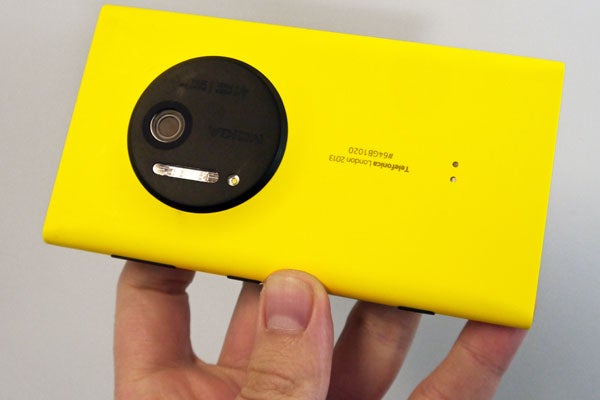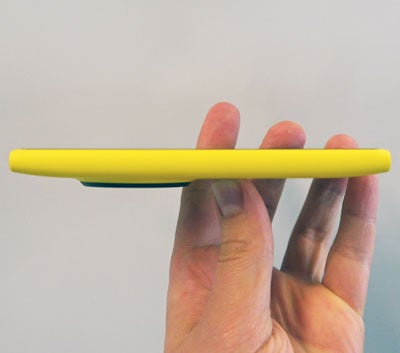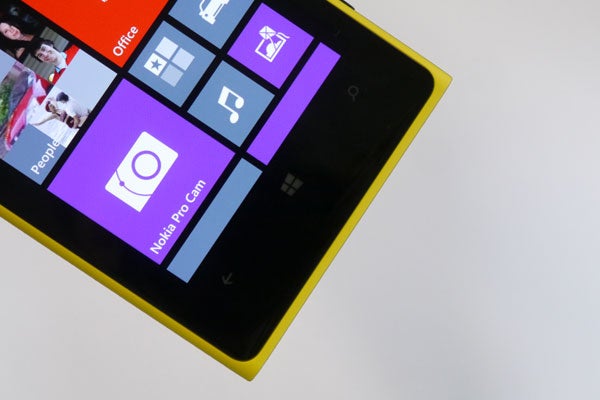Nokia Lumia 1020 Review
Nokia Lumia 1020
Is this the best mobile phone camera ever produced?

Sections
- Page 1 Nokia Lumia 1020 Review
- Page 2 Software and Performance Review
- Page 3 Camera Apps and Performance Review
- Page 4 Camera Image Quality Review
- Page 5 Call Quality, Sound Quality and Verdict Review
- Page 6 David Bailey Photos Review
Verdict
Pros
- Excellent camera in most respects
- Punchy, colourful screen
- Excellent build quality
Cons
- Camera processing is sluggish
- Camera lens housing causes handling issues
- Not much more powerful than entry-level phones
- Windows apps/games selection is poor
Key Specifications
- Review Price: £599.99
- 41-megapixel PureView camera
- Xenon flash with LED focus light
- 4.5-inch 1,280 x 768 pixel Super AMOLED display
- Windows Phone 8
- Dual-Core 1.5GHz Krait CPU, 2GB RAM
What is the Nokia Lumia 1020?
The Nokia Lumia 1020 is a phone we’ve been anticipating for a long time. It’s a Windows Phone 8 mobile that uses similar camera tech to the Nokia 808 PureView. That phone had an incredible camera, but was bought by just a handful, thanks to its rubbish Symbian OS and that no network wanted to stock it.
The Nokia Lumia 1020 is not quite the perfect flagship, but for those who care about having a good on-the-road camera to whip out whenever needed it’s a cracking phone.

Head straight to the Lumia 1020 camera page if that’s all you care about>
Nokia Lumia 1020 – Video Review
Fancy a video version? Here’s our handy video review of the 41-megapixel snapper smartphone.
Nokia Lumia 1020 – Design and Features
Stylistically, the Nokia Lumia 1020 is quite a lot like the Lumia 920, but with a matt, instead of glossy, finish. It uses Lumia’s series-staple colourful polycarbonate for its body, and it’s a relatively chunky and heavy phone.
The chunk issue is exacerbated by the camera housing on the back, which sticks out a couple of millimetres from the rear. The Lumia 1020 is 158g and 10.4mm thick, making it significantly less slim than three key rivals, the Galaxy S4, iPhone 5S and HTC One. 
However, Nokia has managed the make the phone a lot lighter than the 185g Lumia 920 (a right old porker), and we don’t think a 10mm phone is anything to worry about – unlike, say, if it was a phone with a 6.4-inch screen like the Sony Xperia Z Ultra.
There is a design issue, though – ergonomics. When holding the Lumia 1020 the camera housing sits under your fingers. And as it juts out at a fairly severe angle, rather than smoothly blooming out of the body, it feels awkward. In terms of hand-friendliness, this is probably the worst of all the Lumias.
It’s all down to the camera housing, as otherwise the Lumia 1020 has the same Lumia loveliness in its build that we’re used to. Its sides are smoothly curved, and two-tone yellow and black finish of our review model looks great. Its body is yellow, the buttons, screen surround and camera housing are black.
The Nokia Lumia 1020 also comes in black and white, but their looks are less striking. 
Also typical of the Lumia series style, the Nokia Lumia 1020 keeps its sides as simple as possible. There’s no memory card slot, and the microSIM lives in a little tray on the top edge of the phone. There are 32GB and 64GB versions of the phone, but the 64GB edition is only available from O2, for 2013 at least.
It’s pretty up-to-date in terms of features, with NFC and 4G as well as the more common smartphone standards, such as GPS.
Nokia Lumia 1020 – Screen
With a 4.5-inch screen, the Lumia 1020 isn’t up there with the largest-screen phones on the market – almost all top-end Androids have larger displays these days. It’s not immediately obvious that it’s smaller either as the Lumia 1020 has a chunkier bezel than many other of the best phones of 2013.
It does make the Lumia 1020 slightly less attractive as a portable movie/TV watcher though. 
The Lumia 1020 display is a 1,280 x 768 pixel AMOLED screen that’s typical of the Lumia-series ClearBlack display line – which are geared for clarity in all conditions. It’s good too. Contrast is excellent, colour reproduction is strong (if anything we’d like the ability to tone it down) and outdoors brightness is unusally good thanks to the Super AMOLED-type panel and the decent anti-reflective coating used.
It’s a highly effective, good-looking screen in most situations.
There are weak points for pedants to point out, though. We’d argue that this screen doesn’t quite deserve the ‘Retina’ grade tag that Apple cleverly invented when it launched the iPhone 4.
Specs-wise this doesn’t seem to make sense at first – with 1,280 x 768 pixels spread across 4.5 inches, the Lumia 1020’s pixel density is actually slightly higher than the iPhone’s. It is 332 instead of 326ppi.
So how can it be less sharp? The Nokia Lumia 1020’s AMOLED screen uses a PenTile sub-pixel matrix that uses two whole sub-pixels per pixel instead of three. This significantly reduces the impression of sharpness – and looking closely you can still see the slight fuzziness of a PenTile display. However, it is far, far less pronounced than in older large-screen Lumias like the Lumia 900.
How we test phones
We test every mobile phone we review thoroughly. We use industry standard tests to compare features properly and we use the phone as our main device over the review period. We’ll always tell you what we find and we never, ever, accept money to review a product.


